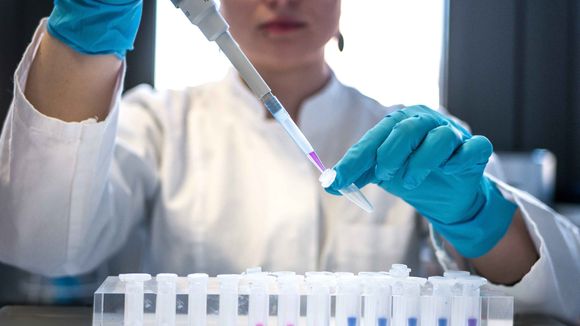The HIV/AIDS Epidemic
Human Immunodeficiency Virus (HIV) is a virus that attacks the immune system, leaving individuals more susceptible to life-threatening infections and diseases. When left untreated, HIV can progress to Acquired Immunodeficiency Syndrome (AIDS), the most advanced stage of the infection. HIV/AIDS affects millions of people worldwide, with symptoms ranging from flu-like illness to severe infections and ultimately, death.
The Green Solution
Scientists have been actively researching plant-based compounds with potential antiviral properties against HIV. Their research has led to several promising discoveries, each with unique mechanisms of action against the virus.
Griffithsin: A Protein from Red Algae
Griffithsin is a protein derived from red algae (Griffithsia sp.) that has demonstrated potent antiviral activity against HIV. According to a study published in the Journal of Biological Chemistry in 2007, Griffithsin can effectively inhibit the replication of HIV by binding to the virus's outer envelope, preventing it from entering host cells.
Further research has confirmed the potential of Griffithsin as an HIV therapeutic. A study published in the journal Nature in 2020 reported that a modified form of Griffithsin, when administered as a nasal spray, provided protection against HIV transmission in non-human primates.

Photo by Lex Melony on Unsplash
Hypericin: A Compound from St. John's Wort
Hypericin is a naturally occurring compound found in the St. John's Wort plant (Hypericum perforatum). It has been proven to exhibit antiviral properties against HIV. A study published in the Journal of Virology in 1991 revealed that Hypericin inhibits the virus's ability to integrate into the host's genetic material, preventing its replication.
Although the use of Hypericin as an HIV therapeutic has faced some challenges due to its photosensitizing properties, researchers continue to explore ways to overcome these limitations and harness its full potential.
Calanolide A: A Compound from the Rainforest Plant Calophyllum lanigerum
Calanolide A, a compound extracted from the Calophyllum lanigerum plant found in the Malaysian rainforest, has shown promise as a novel HIV treatment. A study published in the Journal of Medicinal Chemistry in 1996 demonstrated that Calanolide A inhibits HIV replication by targeting the reverse transcriptase enzyme, which is crucial for the virus's replication process.
Current research is focused on developing synthetic analogs of Calanolide A that retain its antiviral properties while reducing potential side effects.

Photo by JESHOOTS.COM on Unsplash
The Future of HIV/AIDS Treatment
The pursuit of plant-based therapies for HIV/AIDS holds great promise for future breakthroughs. These natural compounds may eventually complement or even replace current treatment options, offering hope for a healthier, more sustainable approach to battling this devastating disease.
As research progresses, scientists continue to uncover the vast potential of the plant kingdom in the fight against HIV/AIDS. With ongoing studies and clinical trials, it is only a matter of time before these groundbreaking plant-based therapies become integral components of HIV/AIDS treatment.
Allergy Note
If you suspect an allergy to any plant-based compounds or ingredients, consult with a healthcare professional before incorporating them into your diet.
Questions and Answers
Q: How do plant-based therapies work against HIV/AIDS?
A: Plant-based therapies can inhibit the replication of the virus, prevent it from entering host cells, or disrupt its ability to integrate into the host's genetic material, depending on the specific compound.
Q: Are plant-based therapies already available for HIV/AIDS patients?
A: While promising, these therapies are still in the research phase and not yet available as standard treatments. Further studies and clinical trials are needed to validate their effectiveness and safety.
Q: Can plant-based therapies replace current HIV/AIDS medications?
A: Although plant-based therapies have shown potential, more research is needed to determine if they can complement or replace existing medications. It is crucial to continue following a healthcare professional's guidance and prescribed medications while these therapies are being studied.
Q: Are there any side effects of using plant-based therapies for HIV/AIDS?
A: As with any treatment, side effects may vary depending on the specific therapy and individual. More research is needed to understand the full scope of potential side effects associated with plant-based therapies for HIV/AIDS.
Q: Can I use plant-based therapies for HIV/AIDS prevention?
A: While plant-based therapies have shown promise in treating HIV/AIDS, they should not be used as a sole method of prevention. Consult with a healthcare professional for guidance on HIV/AIDS prevention strategies, such as practicing safe sex and adhering to pre-exposure prophylaxis (PrEP) when appropriate.









